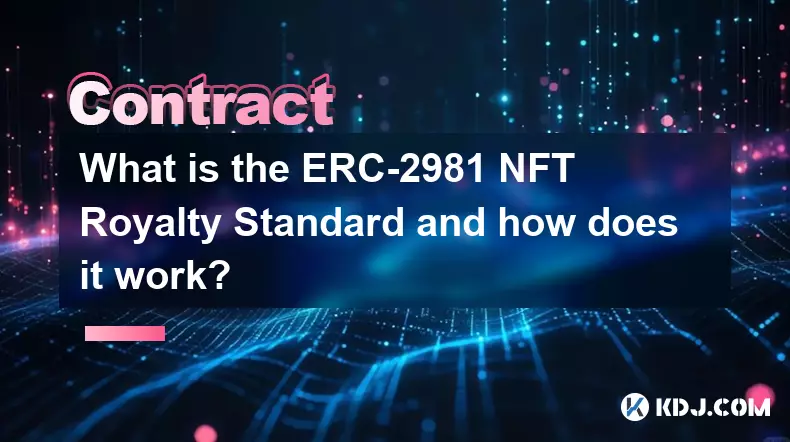-
 bitcoin
bitcoin $102182.982207 USD
-0.92% -
 ethereum
ethereum $3438.744518 USD
0.12% -
 tether
tether $0.999933 USD
0.02% -
 xrp
xrp $2.405093 USD
0.05% -
 bnb
bnb $956.306114 USD
-0.53% -
 solana
solana $153.028851 USD
-1.23% -
 usd-coin
usd-coin $0.999800 USD
-0.03% -
 tron
tron $0.294898 USD
-1.08% -
 dogecoin
dogecoin $0.171428 USD
-0.58% -
 cardano
cardano $0.551186 USD
-1.15% -
 hyperliquid
hyperliquid $38.755878 USD
0.04% -
 chainlink
chainlink $15.298460 USD
-0.05% -
 bitcoin-cash
bitcoin-cash $516.067428 USD
1.68% -
 stellar
stellar $0.280726 USD
-0.42% -
 zcash
zcash $518.919369 USD
18.01%
What is a view function and a pure function in Solidity and what are their gas implications?
View and pure functions in Solidity don’t modify state, enabling free, off-chain execution—ideal for reads and calculations without gas costs.
Nov 12, 2025 at 06:20 pm

Understanding View Functions in Solidity
1. A view function in Solidity is a type of function that promises not to modify the state of the blockchain. It can read from the contract’s storage variables but cannot alter them, emit events, or call functions that do change state.
- Because these functions do not alter state, they can be executed locally on an Ethereum node without broadcasting a transaction to the network. This means users don’t have to pay gas fees when calling them externally.
- The keyword view must be explicitly declared in the function signature. If omitted and the function attempts to modify state, the compiler will throw an error.
- Examples include retrieving a user’s balance, checking allowances in ERC-20 tokens, or reading configuration parameters stored in the contract.
- Despite being free for external callers, view functions still consume computational resources on nodes. Therefore, excessively complex logic inside a view function can lead to timeouts or rejections by some providers.
Exploring Pure Functions in Solidity
1. A pure function goes one step further than a view function by promising not to read or write any state variables. It operates solely on the input parameters passed to it.
- These functions are typically used for mathematical calculations, encoding/decoding operations, or logical checks that don't depend on stored data.
- The pure keyword enforces this restriction at compile time. Attempting to access even a single state variable will result in a compilation failure.
- Like view functions, pure functions incur no gas cost when called externally because they don’t require a transaction. They execute off-chain using local node resources.
- An example would be a function that calculates compound interest based on input arguments or validates a cryptographic signature without referencing contract storage.
Gas Implications of Non-Modifying Functions
1. When a smart contract function is marked as view or pure, external calls to it do not generate transactions. As a result, no gas is charged to the caller.
- Internally, however, if a view or pure function is called by another function within a transaction, its execution still consumes gas. The EVM must process every operation, regardless of whether state changes occur.
- Complex computations inside such functions—like looping over large arrays or performing multiple arithmetic operations—increase the gas cost when invoked internally.
- Developers often optimize performance by minimizing computation in view/pure functions, especially when they are likely to be called during state-changing transactions.
- Mislabeling a function as view or pure when it actually modifies state leads to runtime exceptions or deployment failures, potentially wasting development time and testnet gas.
Common Questions About View and Pure Functions
Q: Can a view function call a pure function?A: Yes, a view function can safely call a pure function. Since pure functions do not read or modify state, they are fully compatible with the constraints of view functions.
Q: What happens if I try to modify a state variable inside a pure function?A: The Solidity compiler will produce an error. Pure functions are strictly prohibited from accessing any state variables, whether for reading or writing.
Q: Do view and pure functions use gas when called from web3.js or ethers.js?A: No, calling these functions via JavaScript libraries does not require a transaction and therefore incurs no gas cost. The execution happens locally on the connected Ethereum node.
Q: Is there a performance difference between view and pure functions?A: From a gas cost and execution speed perspective, there is no inherent difference when called externally. Both execute locally without state changes. Internally, performance depends on computational complexity rather than the modifier used.
Disclaimer:info@kdj.com
The information provided is not trading advice. kdj.com does not assume any responsibility for any investments made based on the information provided in this article. Cryptocurrencies are highly volatile and it is highly recommended that you invest with caution after thorough research!
If you believe that the content used on this website infringes your copyright, please contact us immediately (info@kdj.com) and we will delete it promptly.
- TRX Price & Tron's Resilience: Is the $EV2 Presale the Next Big Thing?
- 2025-11-13 17:00:02
- Sui's Stablecoin USDsui: Fueling the DeFi Ecosystem and Beyond
- 2025-11-13 17:30:01
- Meme Coins in the Hype Market: Utility vs. Virality in 2025
- 2025-11-13 16:55:01
- Bitcoin ATMs: Asia Heats Up as North America Faces Scrutiny
- 2025-11-13 17:20:01
- Crypto Payroll, Regulation, and Innovation: Navigating the New Frontier
- 2025-11-13 17:20:02
- Hakimi Meme Coin, Joyoung Soymilk, and BSC ROI: A Wild Ride in Crypto!
- 2025-11-13 17:30:02
Related knowledge

What is a Denial of Service (DoS) attack in a smart contract and what are its common forms?
Nov 10,2025 at 05:20am
Understanding Denial of Service in Smart Contracts1. A Denial of Service (DoS) attack in the context of smart contracts refers to a scenario where a m...

What is a cryptographic nonce used for in transaction signing?
Nov 11,2025 at 05:59am
Understanding Cryptographic Nonces in Blockchain Transactions1. A cryptographic nonce is a random or pseudo-random number used only once in the contex...

How does inheritance work in Solidity smart contracts?
Nov 11,2025 at 10:40pm
Inheritance in Solidity: Building Modular Smart Contracts1. Inheritance in Solidity allows one contract to adopt the properties and functions of anoth...

What is the difference between an Externally Owned Account (EOA) and a Contract Account?
Nov 13,2025 at 04:00am
Understanding Externally Owned Accounts (EOA)1. An Externally Owned Account is controlled directly by a private key, which means only the holder of th...

What is the ERC-2981 NFT Royalty Standard and how does it work?
Nov 13,2025 at 05:39am
Understanding the ERC-2981 NFT Royalty Standard1. The ERC-2981 standard is a proposed Ethereum Request for Comment that introduces a royalty mechanism...

What is a Minimal Proxy Contract (EIP-1167) and how does it save gas on deployment?
Nov 12,2025 at 11:39am
What is a Minimal Proxy Contract (EIP-1167)?1. A Minimal Proxy Contract, standardized under Ethereum Improvement Proposal (EIP) 1167, is a lightweight...

What is a Denial of Service (DoS) attack in a smart contract and what are its common forms?
Nov 10,2025 at 05:20am
Understanding Denial of Service in Smart Contracts1. A Denial of Service (DoS) attack in the context of smart contracts refers to a scenario where a m...

What is a cryptographic nonce used for in transaction signing?
Nov 11,2025 at 05:59am
Understanding Cryptographic Nonces in Blockchain Transactions1. A cryptographic nonce is a random or pseudo-random number used only once in the contex...

How does inheritance work in Solidity smart contracts?
Nov 11,2025 at 10:40pm
Inheritance in Solidity: Building Modular Smart Contracts1. Inheritance in Solidity allows one contract to adopt the properties and functions of anoth...

What is the difference between an Externally Owned Account (EOA) and a Contract Account?
Nov 13,2025 at 04:00am
Understanding Externally Owned Accounts (EOA)1. An Externally Owned Account is controlled directly by a private key, which means only the holder of th...

What is the ERC-2981 NFT Royalty Standard and how does it work?
Nov 13,2025 at 05:39am
Understanding the ERC-2981 NFT Royalty Standard1. The ERC-2981 standard is a proposed Ethereum Request for Comment that introduces a royalty mechanism...

What is a Minimal Proxy Contract (EIP-1167) and how does it save gas on deployment?
Nov 12,2025 at 11:39am
What is a Minimal Proxy Contract (EIP-1167)?1. A Minimal Proxy Contract, standardized under Ethereum Improvement Proposal (EIP) 1167, is a lightweight...
See all articles










































































